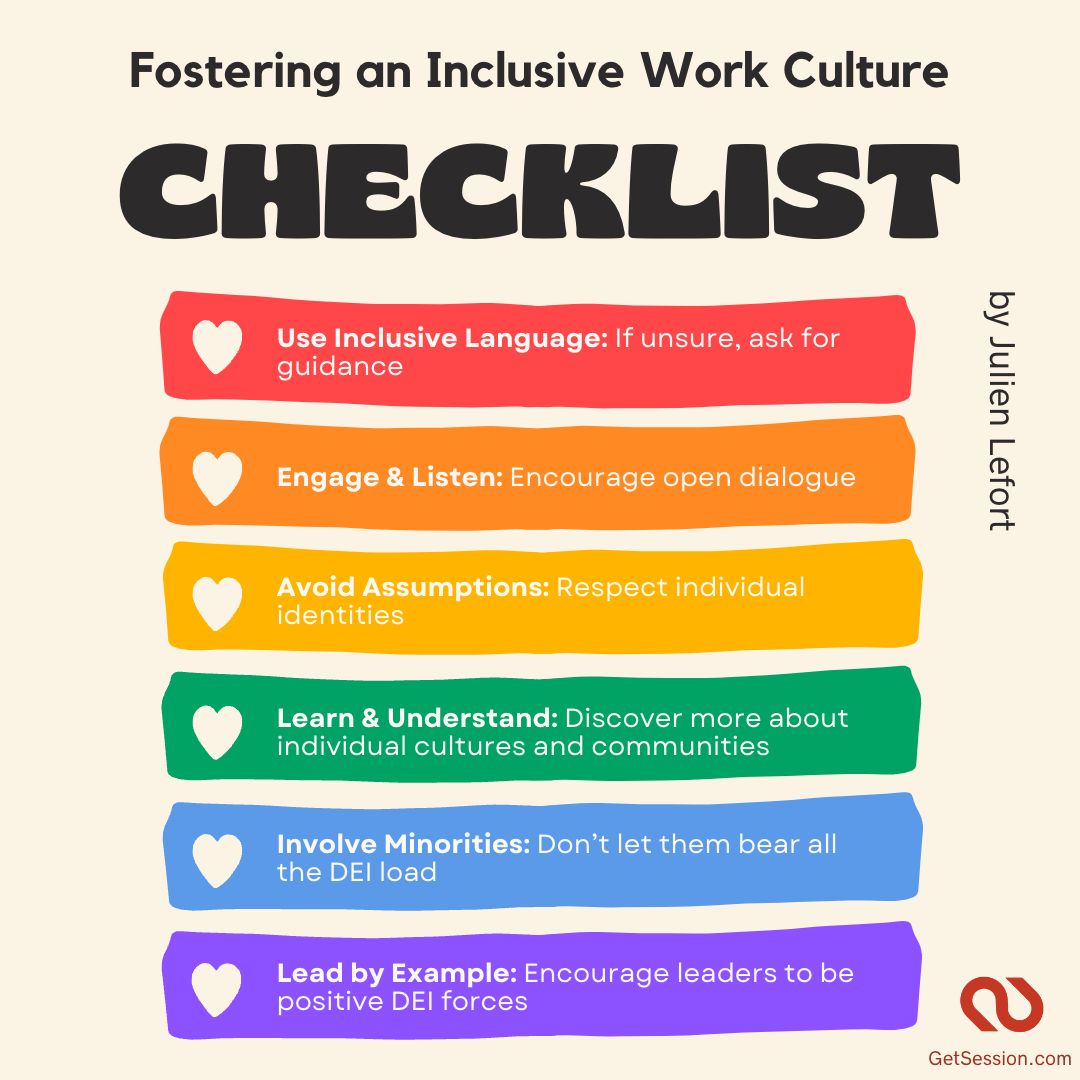As companies around the world rush to implement diversity and inclusion programmes, more and more people are becoming cynical about their intentions. We wanted to discover more about the following questions:
- How can companies support diversity and inclusion in a concrete way?
- How can companies support the LGBTQ+ community in the long-term, not just in the month of June?

DEI Is a Process, Not a Linear Path
Most leaders would like to believe that their organizations are making linear progress on fostering diversity, equity and inclusion (DEI). Yet in reality, the practice and implementation of DEI culture tends to be a process, not a linear path.
It’s easy to say your company is diverse, and to present it in this way to the outside world. For example, during Pride Month, many organizations change their logo to represent the LGBTQ+ rainbow colors. Although updating your logo is a starting point, this act alone does not make you an ally. In a similar vein, if you encourage your employees to update their pronouns on their email signatures, but do not encourage the use of inclusive language in the workplace on a day to day basis, you are only addressing a very small part of the iceberg. Allyship comes from taking concrete action that supports minorities and communities in tangible, meaningful ways, continuously. If your company is treating DEI like a check-box exercise, you need to reevaluate your processes and company values.
Awareness is a great starting point. And yes, actions such as updating your branding and communications are great ways to show support. But this is not enough. Taking concrete steps to create a culture of inclusion is what counts. Consider the following questions:
- How do we listen to the people within organizations that are considered minority groups?
- How do we encourage them to share their experiences and how do we empower them to share their voice, without forcing them to?
- How can we make everyone feel like they belong?
- What are some activities that we, as an organization, can implement to concretely support diverse individuals and minorities?
If you’re a leader, how do you think your organization is doing in terms of the above questions? Taking the time to reflect on what your organization is doing right, and what it needs to improve upon, is a great first step to taking actionable steps.
DEI Implementation: Who Is Responsible?
Currently, we see HR teams taking the brunt when it comes to supporting DEI in the workplace. While it’s imperative that HR teams are skilled in DEI Proficiency, HR might in fact have taken on too much responsibility.
I believe that the responsibility of DEI initiatives lies not just with HR, but with everyone in the organization. Everyone has a role in promoting a healthy, diverse, and inclusive work culture. Everyone has an impact and so do their actions and words. That ‘’harmless’’ racist or sexist joke that happens at the coffee machine (or perhaps at the virtual social, if your organization is remote) impacts company culture. There won’t always be a leader around when comments or microaggressions are made, so a degree of accountability also lies with the individual to call things out when needed.
However, it’s also important to place a particular responsibility on the organization's founders and leaders. Founders and leaders have a high degree of influence on shaping employees’ perceptions and values. For DEI initiatives to actually work, inclusive leadership must be present within the organization. Inclusive leadership assures that all team members feel they are treated respectfully and fairly, are valued and sense that they belong, and are confident and inspired. It takes energy and deliberate purpose to create an inclusive and diverse culture, and that starts with leaders paying much more attention to what they say and do on a daily basis, and noting how their behavior impacts employees within the organization.
Is Hiring Diverse People Enough to Sustain a Culture of DEI?
As hiring practices are becoming more inclusive in nature, it’s easy for recruitment and HR professionals to fall into a trap of ‘’Simply hiring more diverse people’’ as a one size fits all approach to diversity.
But it’s important to consider, once your company has hired diverse people, how do you make them feel welcome in the company? It’s all very well and good to hire more women into upper management positions, but if the internal mechanisms of the organization work like a ‘’boy’s club’’, how welcome will women and non-binary people feel at work? Diversity isn’t just about the hiring piece, it’s all about the retention piece, and making underrepresented groups feel welcome in the workplace is crucial.
Your company culture will suffer if the diverse people you hire do not feel safe in your organization. Make sure that your organization, and its leaders, are accountable, making diverse people feel included, and psychologically safe within the organization. More crucially, approaching minorities and diverse individuals to gain a sense of their experience.
Don’t Put the DEI Burden On Minorities
The burden to launch DEI initiatives often falls on minorities, placing excess stress and responsibility on their shoulders. Yes, diverse voices should be heard and listened to. Yes, minorities need to be included more and more in boardroom conversations. But, the initiatives should not be their responsibility alone.
If organizations are placing unwanted pressure on minorities to share their voices and recommendations, DEI initiatives can start to feel like a stressful burden. Don’t make assumptions that they should be the ones to educate. Non-minorities also need to be involved and need to take responsibility for their own development and growth.
Belonging Is Better for Business, Belonging Is Better for Individuals
It’s no secret that diverse teams perform better. Better performance = a better bottom line. A McKinsey report on 366 public companies found that those in the top quartile for ethnic and racial diversity in management were 35% more likely to have financial returns above their industry mean, and those in the top quartile for gender diversity were 15% more likely to have returns above the industry mean.
If you do a quick Google search for ‘’benefits of diversity and inclusion’’, you’ll find many resources that discuss DEI benefits for the organization. While organizational benefits are important, we must not forget how DEI also benefits the individual. Because if people within the organization don’t change on an individual level - nothing will actually change. You cannot change the world as an individual. But you can make small changes that will add up to make an impact.
A Few Tips To Sum It All Up
Businesses are run by humans, and humans are far from perfect. Sometimes we offend people when we don’t mean to, sometimes we say the wrong things and cringe in hindsight. Sometimes we (consciously or unconsciously) exclude or hurt others. But the most important thing we can do is try to make an effort. It’s the little things that will add up to make your workplace more inclusive. Here are some things you can do, right now, to help promote an inclusive work culture:
- Make an effort to use inclusive language, and if you feel like you don’t know how - ask for help.
- Make an effort to ask questions, and listen to the responses.
- Don’t make assumptions based on individuals’ ethnicity, gender, sexual orientation, religion, or socio-economic backgrounds.
- Make an effort to get to know more about individuals, their cultures, and their communities.
- Include minorities in DEI conversations, but do not expect these individuals to do all of the heavy lifting.
- Encourage individuals to take personal responsibility for expanding their DEI knowledge.
- Sustain a culture in which leaders are examples of positive DEI forces.
Displaying genuine care, curiosity, and a willingness to learn in the workplace goes a long way, not just for Pride Month, but for all months of the year. I hope the knowledge that I have shared in this piece will be helpful in supporting an inclusive and diverse workplace for you and your teams.













